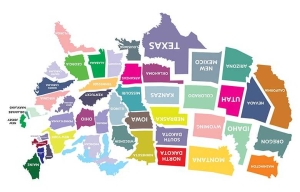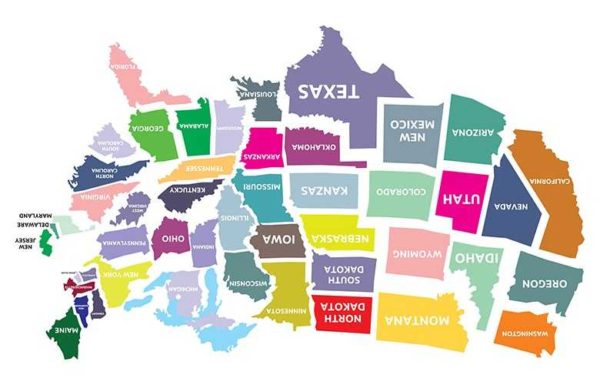How two teachers overcome the challenges of flipping their classrooms and co-planning lessons across states
 Who says you can only use the flipped teaching method in your own class or with other teachers in your school or district? Not Andrew Thomasson and Cheryl Morris, that’s for sure.
Who says you can only use the flipped teaching method in your own class or with other teachers in your school or district? Not Andrew Thomasson and Cheryl Morris, that’s for sure.
For the last few years, this enterprising duo has been flipping their English classes, co-moderating a weekly Twitter education chat, presenting at conferences, planning lessons, and collaborating regularly from opposite sides of the country. With Thomasson based in North Carolina and Morris in California, the pair run their own blogs, Morris Flips English and Concerted Chaos, focused mainly on the creation of flipped classroom materials and the application of that content in the K-12 classroom.
The pair joined forces in 2012 after Morris, who teaches sixth grade English and History at Del Mar Middle School in Tiburon, Calif., was introduced to the flipped learning concept.
“I was working for a district in San Francisco at the time and I got obsessed with the idea of flipping the classroom,” Morris said. She started making her own videos while at the same time thinking about how she should become part of the larger flipped learning movement. “Andrew and I met when we both saw a tweet (via a Twitter chat) saying, ‘Hey, there are English teachers interested in doing video stuff here.’”
A couple of days later, Morris and Thomasson chatted about the possibilities via Facetime. They started making videos together and were encouraged by a peer to take their creations out into the classroom. “We started by collaboratively planning our classes together and letting our students interact to some degree,” says Morris, “all with an eye on coordinating as much as possible from two very different schools and classes.”
Starting from scratch
Thomasson, who teaches English at Forestview High School in Gastonia, N.C., said neither teacher knew much about making videos back in 2012. Early on, they would just “hang out in the evenings and co-plan.” Both were focused on enhancing the learning and knowledge that their textbooks covered, and also on making their curriculums better and more engaging. “The kids are different every year,” said Morris, “so it doesn’t make sense to take the old course outline, copy it, and start from Point A.”
The first year, the teachers had their students join an Edmodo group and then use the platform to get acquainted with one another. “It was an extension of, ‘Is everyone in North Carolina a redneck?” and ‘Does everyone in California live at the beach?” said Morris. “From there, we did a ‘genius hour’ where our kids made projects, built playlists, and then shared them with one another across the miles.”
Morris and Thomasson have since concluded that having students build projects (desktop publishing), use puppets (instead of talking directly into the camera) to design videos, and give each other feedback on the projects tend to be most effective in the flipped environment. With Morris focused on middle school and Thomasson on high school, the pair brings different attributes to the planning and flipping table. His students get to serve as mentors for the younger students, who, in turn, learn from their older counterparts.
“My students love having a sounding board; ninth graders are much less threated by 11-year-olds than they are by peers of the same age,” said Thomasson, whose desktop publishing classes have collaborated with their younger counterparts to design school newsletters for the latter. “My pupils get hands-on, real-world skills,” he explained. “It’s a pretty cool evolution of class-to-class relationships.”
A focus on the future
These days, the pioneering teachers focus mainly on co-planning their classes, but that doesn’t mean there isn’t more flipping in their futures. “Flipping is a lot of work,” Morris admitted. Because she hasn’t taught four different grade levels since meeting Thomasson (who teaches at least one brand new class every year), there’s no “bank” of videos to pull from. Every lesson is created from scratch — a process that requires collaboration, brainstorming, and good time zone coordination.
“When I’m winding down for the day, Cheryl is just getting to the point where she can devote time to planning and collaborating on these projects,” said Thomasson. “And when I’m up early in the morning planning, she’s not even awake yet. Trying to coordinate that time difference has been a challenge.”
Morris said there are also relational challenges. When you work closely with someone on a project that you’re truly passionate about, pushing one another’s boundaries and thought processes is both critical and challenging. “You have to be willing to say, ‘That’s not a very good idea,’ or ‘I don’t think that will work,’” Morris points out. “Early on, when you’re just beginning to build a relationship with someone face-to-face there’s a certain level of trust that you have because that person is in the same building. It’s a lot different when you’re working online.”
On a positive note, both Morris and Thomasson say that their pairing helped them work through career obstacles. “In 2012, we were both eight or nine years into teaching and facing burnout. We were bored with doing the same stuff,” says Morris. “We both liked the novelty of the flipped classroom, and I personally have a lot more energy around work than I did previously.”
Thomasson concurs, and says that he’s made many friends through the flipped community, hung out at conferences, and brought a new level of energy into his teaching. “It’s a lot better for kids when their teachers are in a good mental space and excited about school,” says Thomasson. “It’s had that impact on me.”
Right now, Morris and Thomasson are developing a video series focused on the writing process.
“We want to go beyond just brainstorming, picking an idea, doing an outline, and writing the 5-paragraph essay,” says Morris. “That’s not the way professionals write. We’re going to deconstruct the process and look more carefully at how creative people work, and how to make that applicable to the writing process in the classroom.”
Bridget McCrea is a contributing writer to eSchool News.
- TC- What student choice and agency actually looks like - November 15, 2016
- What student choice and agency actually looks like - November 14, 2016
- App of the Week: Science sensor meets your smartphone - November 14, 2016


